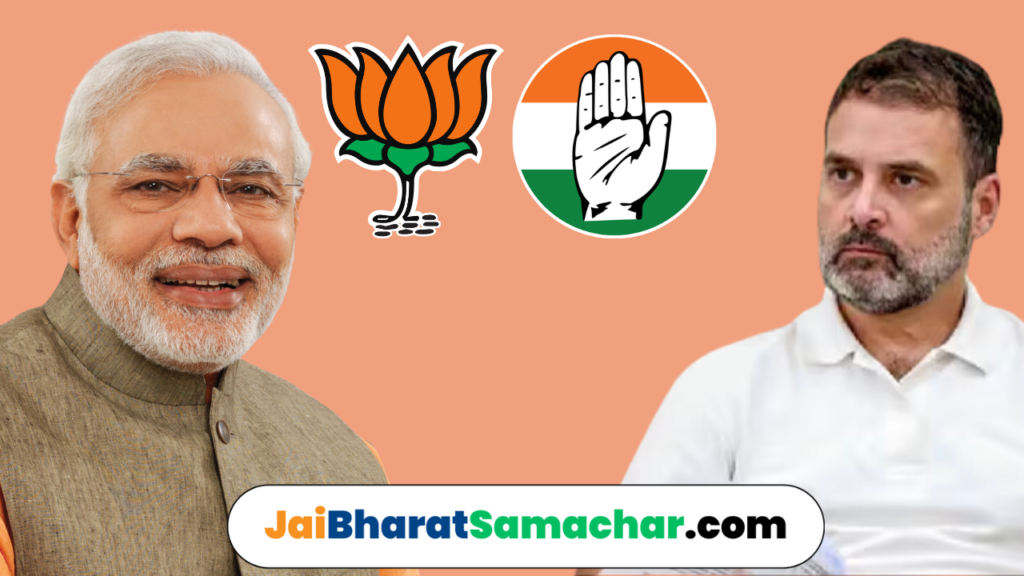भारतीय सिनेमा और साहित्य के इतिहास में कई बार ऐसे विवाद उठ खड़े हुए हैं, जहां कुछ फिल्मों और पुस्तकों पर प्रतिबंध लगाया गया। इन प्रतिबंधों के पीछे कई कारण हो सकते हैं जैसे कि राजनीतिक संवेदनशीलता, सामाजिक मान्यताएं, धार्मिक भावनाओं का सम्मान, या मौलिक स्वतंत्रता और अभिव्यक्ति की सीमाओं के बारे में चर्चा। इस वार्तालाप में हमने उन फिल्मों और पुस्तकों का जिक्र किया है जिन पर विभिन्न समय में कांग्रेस सरकार द्वारा प्रतिबंध लगाया गया, और इससे जुड़े समाजिक और राजनीतिक परिप्रेक्ष्य को भी समझने की कोशिश की है।
FREEDOM of Speech Banned Restricted by Congress and Nehru

Nehru Congress India Governments Banned Freedom of Speech
भारतीय सिनेमा का इतिहास अनेक प्रतिबंधों और विवादों से भरा पड़ा है। नेहरू सरकार के समय में भी कुछ फिल्मों पर प्रतिबंध लगाया गया था या उन्हें अवरुद्ध किया गया था, जो कि उस समय के सामाजिक और राजनीतिक परिवेश को दर्शाता है। यहाँ हम कुछ ऐसी ही फिल्मों की चर्चा करेंगे:
- नील आकाशर नीचे (1959): यह फिल्म मृणाल सेन द्वारा निर्देशित थी और इसे चीनी आक्रमण के दौरान भारत-चीन संबंधों को लेकर उत्पन्न तनाव के कारण प्रतिबंधित कर दिया गया था।
- गरम हवा (1973): म.एस. सथ्यु की इस फिल्म को भारत-पाकिस्तान विभाजन के नाजुक विषय को छूने के कारण रिलीज़ से पहले काफी समय तक रोका गया था। हालांकि, यह प्रतिबंध नेहरू सरकार के दौरान नहीं लगाया गया था, लेकिन इसकी विवादास्पद प्रकृति ने इसे ऐतिहासिक महत्व दिया।
- आंधी (1975): गुलज़ार की यह फिल्म, जिसमें सुचित्रा सेन और संजीव कुमार मुख्य भूमिकाओं में थे, इंदिरा गांधी और उनके पति फिरोज़ गांधी के जीवन से समानताएं होने के कारण विवादों में रही। इसे इंदिरा गांधी सरकार के दौरान प्रतिबंधित किया गया था।
इन फिल्मों के प्रतिबंधों ने न केवल भारतीय सिनेमा की स्वतंत्रता पर बल्कि सामाजिक और राजनीतिक संवाद पर भी प्रभाव डाला। यह दर्शाता है कि कैसे सिनेमा का इस्तेमाल एक शक्तिशाली माध्यम के रूप में किया जा सकता है जो समाज और सरकारों के बीच संवाद को प्रभावित कर सकता है। ये प्रतिबंधित फिल्में न केवल अपने समय के राजनीतिक और सामाजिक माहौल को प्रतिबिंबित करती हैं, बल्कि आज भी इतिहास के एक महत्वपूर्ण हिस्से के रूप में याद की जाती हैं।
यह महत्वपूर्ण है कि समाज के विकास के लिए विचारों का आदान-प्रदान और संवाद को स्वतंत्र रखा जाए। सिनेमा एक ऐसा माध्यम है जो व्यक्तिगत और सामूहिक अनुभवों को साझा करने, सामाजिक मुद्दों पर चर्चा करने और सांस्कृतिक संवादों को आगे बढ़ाने की क्षमता रखता है। इसलिए, यह आवश्यक है कि कला और साहित्य के प्रति एक खुला और स्वीकार्य दृष्टिकोण अपनाया जाए, जिससे समाज में सहिष्णुता और समझ को बढ़ावा मिल सके।
नेहरू सरकार के दौरान प्रतिबंधित फिल्मों की सूची याद दिलाती है कि सिनेमा किस तरह से राजनीतिक और सामाजिक परिदृश्य को आकार दे सकता है और समाज के विकास में एक महत्वपूर्ण भूमिका निभा सकता है। इसलिए, इस तरह के प्रतिबंधों को समझने और उनसे सीखने की आवश्यकता है, ताकि भविष्य में सृजनात्मक अभिव्यक्ति और सांस्कृतिक संवाद को समृद्ध किया जा सके।
The Era of Bans: Films Censored by the Congress Government
The history of Indian cinema is not only a chronicle of artistic evolution but also a reflection of the country’s political landscape. This is particularly evident in the instances where the Congress government, during its various tenures, imposed bans on certain films. These bans often stemmed from concerns over political sensitivities, communal harmony, or moral policing, leading to a complex dialogue between censorship and freedom of expression. Here’s a look at some notable films that faced the censor’s scissors:
1955: Summertime
The romantic allure of Venice took a backseat when “Summertime” was banned. The film’s narrative, focusing on an American woman’s love affair with a married Italian man, raised eyebrows for its moral implications, leading to a nationwide ban.
1959: Neel Akasher Neechey
“Neel Akasher Neechey” brought to light the struggles of an immigrant Chinese wage laborer in 1930s Calcutta. However, its overtones of sexual harassment led to a two-month ban, reflecting the socio-political sensitivities of the time.
1963: Gokul Shankar
Delving into the psyche of Nathuram Godse, Mahatma Gandhi’s assassin, “Gokul Shankar” faced a ban for its controversial subject matter, challenging the boundaries of political discourse in cinema.
1973: Garam Hawa
Set against the backdrop of the Partition of India, “Garam Hawa” depicted the trials of a Muslim family during this tumultuous period. The film’s release was delayed by the censors for 8 months, underscoring the contentious nature of historical narratives.
1975: Aandhi
During the Emergency, “Aandhi” was banned for its perceived parallels with the life of then-Prime Minister Indira Gandhi. It was only after the shift in political power in 1977 that the film saw the light of day.
1977: Kissa Kursi Ka
A satirical take on the Emergency, “Kissa Kursi Ka” was not just banned but its copies were reportedly destroyed, symbolizing an extreme reaction to political satire.
1971: Sikkim
After the integration of Sikkim into India, the documentary “Sikkim” was banned for portraying the erstwhile sovereign state under the Chogyal rule, highlighting the sensitive nature of national unity and territorial integrity.
1979: Khaak Aur Khoon
Based on the novel of the same name, “Khaak Aur Khoon” was banned by India’s Central Board of Film Certification, reflecting the contentious nature of Partition-related narratives.
1984: Indiana Jones and the Temple of Doom
This Hollywood blockbuster faced a temporary ban for its “negative” depiction of Indians, particularly a scene involving monkey brains, which clashed with the religious sentiments of Hindus.
1987: Pati Parmeshwar
The film’s portrayal of a woman’s subservience to her husband led to a denial of rating by the Censor Board, only to be later allowed by the Bombay High Court, showcasing the evolving discourse on gender roles.
1993: Kuttrapathirikai
With the backdrop of Rajiv Gandhi’s assassination, “Kuttrapathirikai” faced a long delay in release, reflecting the sensitive nature of recent political history.
1994: Bandit Queen
“Bandit Queen” stirred controversy for its raw portrayal of Phoolan Devi’s life, leading to a temporary ban by the Delhi High Court over concerns regarding its authenticity and depiction of sensitive themes.
Each of these films represents a moment in India’s cinematic and political history, where the line between artistic freedom and censorship was navigated, often contentiously. These bans not only reflect the cultural and political zeitgeist of their times but also raise perennial questions about the role of cinema in society and the limits of freedom of expression
A Chronicle of Censorship: Books Banned by the Congress Government in India
The landscape of Indian literature and publishing has been periodically marked by instances of censorship, where books have been banned for various reasons ranging from political sensitivity to religious sentiments. The Congress government, during its tenure, has been at the center of several such controversies, leading to the banning of a number of books. These instances not only reflect the socio-political climate of the times but also raise important questions about freedom of expression and the limits of state intervention.
The 1950s: The Early Days of Censorship
- 1950: “Pakistan-Pasmanzarwa Peshmanzar” by Hameed Anwar and several other books originally in Urdu like “Cease-Fire” by Agha Babar, and “Khaak aur Khoon” by Nusseim Hajazi were banned from being imported into India, reflecting the tense post-partition relations between India and Pakistan.
- 1955: “Rama Retold” by Aubrey Menen was a playful take on the Ramayana, which became one of the first books to face the ban hammer in independent India, hinting at the sensitive nature of religious and cultural depictions.
The 1960s: Political Sensitivities and Cultural Critiques
- 1960: “The Lotus and the Robot” by Arthur Koestler critiqued the cultures of India and Japan, leading to its ban for the negative portrayal of these societies and their revered figure, Mahatma Gandhi.
- 1962: “Nine Hours to Rama” by Stanley Wolpert highlighted security lapses leading to Gandhi’s assassination, resulting in its ban, which included the movie adaptation, underscoring the sensitivity around portrayals of historical events.
The 1970s: The Era of Political Biographies and Critiques
- 1971: “Nehru: A Political Biography” by Michael Edwardes purportedly contained factual inaccuracies and was banned, reflecting the protective stance towards the legacies of national leaders.
- 1975: “Early Islam” by Desmond Stewart and “India Independent” by Charles Bettelheim in 1976 faced bans for their critical perspectives on religious history and Indian government policies, respectively.
The 1980s and Beyond: Expanding the Boundaries of Censorship
- 1983: “The Price of Power: Kissinger and Nixon in the White House” by Seymour Hersh was temporarily banned for alleging Indian political figures as foreign informants, showcasing the international dimension of censorship concerns.
- 1984: “Smash and Grab: Annexation of Sikkim” by Sunanda K. Datta-Ray dealt with sensitive political issues surrounding Sikkim’s annexation, leading to a halt in its publication, later lifted by the Delhi High Court.
- 1988: “The Satanic Verses” by Salman Rushdie faced an import ban after significant protests from Muslim groups, marking one of the most famous instances of book banning on religious grounds, with India being the first country to impose such a ban.
Reflections on Censorship
These instances of book banning by the Congress government underscore the ongoing tension between freedom of expression and the perceived need to protect societal sensibilities, national security, or political legacies. Each banned book tells a story not just within its pages but also of the time and context in which it was censored, offering a lens through which to view the evolving dialogue on censorship in India.
The Shadows Over Freedom: A Glimpse into Nehruvian and Subsequent Congress Eras
The journey of India through the corridors of democracy and freedom has been both inspiring and challenging. The Nehruvian era, marked by the leadership of Jawaharlal Nehru, India’s first Prime Minister, laid the foundation stones of a newly independent nation aspiring towards a democratic, secular, and inclusive society. However, this journey was not devoid of its trials, particularly concerning the freedom of speech and expression. This blog delves into instances during the Nehruvian era and subsequent Congress governments where freedom of speech seemed to be in contention, highlighting the complex dance between governance, censorship, and the quest for societal harmony.
The Nehruvian Paradigm: Balancing Act in a New Democracy
Jawaharlal Nehru, revered for his visionary leadership, was also at the helm during times when the freedom of expression faced scrutiny. The intent was often to maintain public order and national unity in a country brimming with diverse religions, languages, and ethnicities. However, critics argue that certain actions during this period bordered on censorship, impacting the literary and cinematic world.
One notable instance was the introduction of the First Amendment to the Indian Constitution in 1951, which imposed “reasonable restrictions” in the interest of public order, state security, and decency. This amendment was a response to judicial decisions that had invalidated government actions censoring speech and publications. While intended to protect the nascent state’s integrity, it also gave the government a legal framework to limit free expression deemed threatening to state security or public order.
The Congress Legacy: Cinema, Literature, and the Politics of Censorship
The Congress governments over the years have had a nuanced relationship with freedom of speech. While championing democracy and pluralism, there have been several instances where books and films faced bans, ostensibly to protect public sentiment or national integrity. Films like “Aandhi” and books such as “The Satanic Verses” by Salman Rushdie faced bans or restrictions, sparking debates on the limits of artistic freedom and expression.
The banning of “Aandhi” during the Emergency imposed by Indira Gandhi, Nehru’s daughter, was particularly controversial. The film, believed to be inspired by Indira Gandhi’s life, was banned for its potential to disrupt public order. This period also saw a clampdown on political dissent and press freedom, casting a long shadow on Congress’s commitment to free speech.
Reflections on Freedom and Responsibility
The journey of free speech in India, under various Congress-led governments, reflects a complex interplay of democratic ideals, cultural sensitivities, and the challenges of governance in a diverse society. While aiming to protect the fabric of a multi-ethnic and multi-religious society, the measures taken have often ignited debates on freedom of expression. It brings forth the eternal question of how democracies balance free speech with the equally important need for social harmony and national security.
In retrospect, the Nehruvian era and subsequent Congress governments have contributed significantly to India’s democratic and secular ethos. Yet, the instances of censorship and curtailment of freedom of speech serve as reminders of the delicate balance between authority and liberty, a balance that continues to evolve in the world’s largest democracy.
As we move forward, the lessons from the past serve as a beacon for nurturing a more open, inclusive, and expressive society. The path ahead lies in dialogue, understanding, and the unwavering commitment to the democratic principles that define India, ensuring that the spirit of freedom, so cherished at the dawn of independence, flourishes in every aspect of Indian democracy.
Congress Government acts and Policies from 2004 to 2014 which restricted freedom of speech
During the Congress government’s tenure from 2004 to 2014, there were instances and policies that had implications on freedom of speech in India. The use of laws like Sections 295A and 298 of the Indian Penal Code, which pertain to “insulting religion”, often came under scrutiny for their subjective application that could potentially silence dissenting voices or lead to self-censorship among authors, artists, and filmmakers. Such laws enable prosecutions based on the subjective response of those who hear or view the content, and have been utilized by various groups to file complaints against perceived offensive material, leading to legal actions and sometimes arrests.
The period also witnessed concerns over press freedom, with India’s ranking in press freedom experiencing a drop. This decline was linked to the existence of India’s sedition law, which was said to encourage self-censorship, particularly in a climate of heightened nationalism. The law, along with incidents like the murder of senior journalist Gauri Lankesh and challenges faced by media outlets in conflict zones like Kashmir, where they reportedly became targets of violence with the central government’s tacit consent, highlighted the threats to media freedom.
Moreover, the legal framework for media censorship in India includes various laws and regulations that have had controversial impacts over the years. The Constitution of India guarantees freedom of speech and expression with reasonable restrictions for sovereignty and integrity of the country, public order, and defamation. However, laws like the Information Technology Act, 2000, and amendments to acts like the Right to Information Act, 2005, have raised concerns about their potential to stifle free speech and the transparency and accountability of the censorship process.
These instances reflect the complex interplay between maintaining public order and national security, and preserving the fundamental right to freedom of speech and expression in a diverse and democratic society like India
Jai Hind | Jai Bharat | Jai Shri Ram | Akhand Bharat











